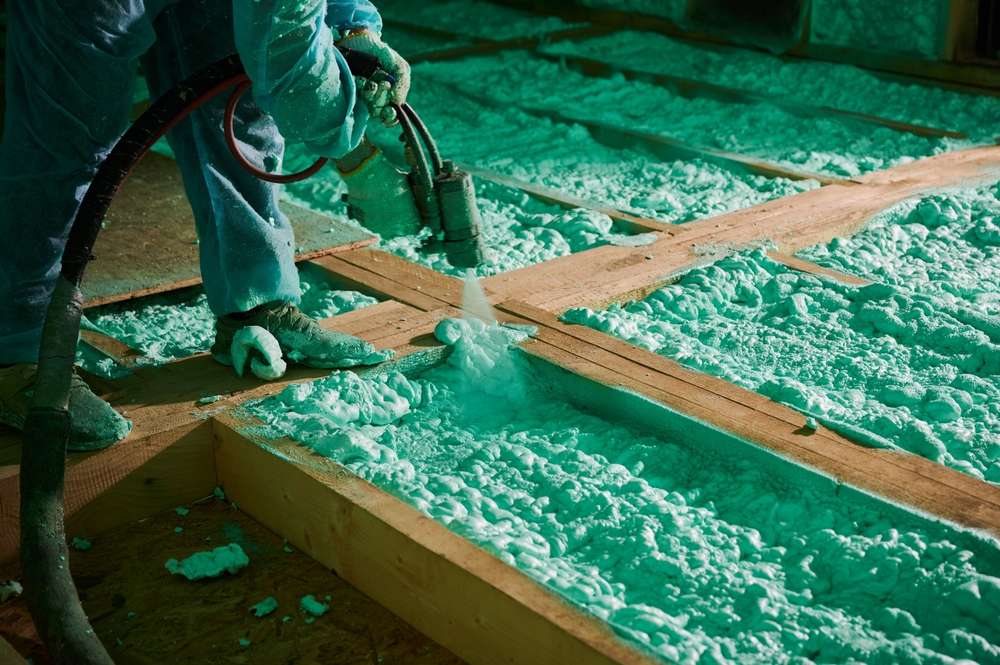SPRAY FOAM INSULATION: A COMPREHENSIVE GUIDE TO ENERGY-EFFICIENT HOME SOLUTIONS
Spray foam insulation has revolutionized the way we think about home insulation, offering superior thermal protection and energy efficiency. This innovative solution has gained popularity among homeowners and contractors alike, thanks to its ability to create an airtight seal and provide excellent insulation properties. In this comprehensive guide, we'll explore the ins and outs of spray foam insulation, its benefits, installation process, and why it might be the right choice for your home.

What exactly is spray foam insulation?
Spray foam insulation is a modern insulation material that expands and hardens upon application, creating a seamless barrier against heat transfer and air infiltration. It’s composed of two main ingredients: polyol resin and isocyanate. When these components are mixed and sprayed onto surfaces, they react chemically, expanding up to 100 times their original volume and forming a rigid foam that adheres to most building materials.
How does spray foam insulation compare to traditional options?
Compared to traditional insulation methods like fiberglass batts or cellulose, spray foam insulation offers several advantages. It provides a higher R-value per inch, meaning better insulation performance in a thinner layer. Unlike conventional materials that can leave gaps or settle over time, spray foam creates a continuous air barrier, effectively sealing cracks and crevices. This results in superior air sealing and moisture control, potentially leading to improved energy efficiency and indoor air quality.
What are the main types of spray foam insulation?
There are two primary types of spray foam insulation: open-cell and closed-cell. Open-cell foam is less dense and more flexible, making it ideal for interior walls, attics, and sound dampening. It’s more affordable but offers a lower R-value per inch. Closed-cell foam, on the other hand, is denser and more rigid, providing a higher R-value and acting as a vapor barrier. It’s suitable for both interior and exterior applications, including areas prone to moisture.
How is spray foam insulation installed?
The installation of spray foam insulation is a job best left to professionals due to the specialized equipment and expertise required. The process typically involves:
-
Preparation: Clearing the area and protecting surfaces not being insulated.
-
Application: Using a spray gun to apply the foam mixture to walls, ceilings, or other surfaces.
-
Expansion: The foam expands rapidly, filling gaps and creating an airtight seal.
-
Curing: The foam hardens and sets, usually within 24 hours.
-
Trimming: Excess foam is trimmed for a smooth finish.
Professional installation ensures proper application thickness and coverage for optimal performance.
What are the benefits and potential drawbacks of spray foam insulation?
Spray foam insulation offers numerous benefits, including:
-
Superior insulation performance
-
Excellent air sealing properties
-
Moisture resistance and mold prevention
-
Structural reinforcement
-
Long-term energy savings
-
Reduced noise transmission
However, it’s important to consider potential drawbacks:
-
Higher initial cost compared to traditional insulation
-
Requires professional installation
-
Potential for off-gassing during and shortly after installation
-
Difficult to remove or modify once installed
What are the cost considerations for spray foam insulation in Canada?
The cost of spray foam insulation in Canada can vary significantly based on factors such as the type of foam, the area to be insulated, and the complexity of the installation. Generally, spray foam insulation is more expensive upfront than traditional options but can offer long-term savings through improved energy efficiency.
Here’s a comparison of average costs for different insulation types in Canada:
| Insulation Type | Average Cost per Square Foot | R-Value per Inch |
|---|---|---|
| Open-Cell Spray Foam | $1.00 - $1.50 | R-3.6 to R-3.8 |
| Closed-Cell Spray Foam | $1.50 - $2.50 | R-6 to R-7 |
| Fiberglass Batts | $0.50 - $1.00 | R-2.2 to R-2.7 |
| Blown-in Cellulose | $0.80 - $1.20 | R-3.2 to R-3.8 |
Prices, rates, or cost estimates mentioned in this article are based on the latest available information but may change over time. Independent research is advised before making financial decisions.
While the initial investment for spray foam insulation may be higher, many homeowners find that the long-term energy savings and improved comfort justify the cost. Additionally, some provinces in Canada offer rebates or incentives for energy-efficient home improvements, which can help offset the initial expense of spray foam insulation.
In conclusion, spray foam insulation represents a significant advancement in home insulation technology. Its ability to create an airtight, energy-efficient envelope around your home makes it an attractive option for many Canadian homeowners. While it requires a higher upfront investment and professional installation, the long-term benefits in energy savings, comfort, and home value can make spray foam insulation a wise choice for those looking to maximize their home’s energy efficiency.




